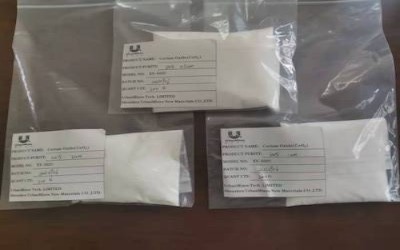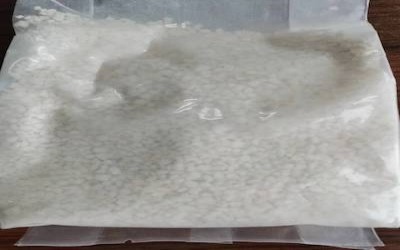-
Give us a call +86 -755-25432352
-
Email us info@urbanmines.com
-
Come & visit us No. 11, Bld. C, Hengmingzhu Tech. Industrial Park, Shajing Subdistrict, Bao'an District, Shenzhen, Guangdong, China
Give us a call +86 -755-25432352
Email us info@urbanmines.com
Come & visit us No. 11, Bld. C, Hengmingzhu Tech. Industrial Park, Shajing Subdistrict, Bao'an District, Shenzhen, Guangdong, China

The rapid development in the fields of information and optoelectronics has promoted the continuous updating of chemical mechanical polishing (CMP) technology. In addition to equipment and materials, the acquisition of ultra-high-precision surfaces is more dependent on the design and industrial production of high-efficiency abrasive particles, as well as the preparation of the corresponding polishing slurry. And with the continuous improvement of surface processing accuracy and efficiency requirements, the requirements for high-efficiency polishing materials are also getting higher and higher. Cerium dioxide has been widely used in the surface precision machining of microelectronic devices and precision optical components.
Cerium Oxide polishing powder polishing powder has the advantages of strong cutting ability, high polishing efficiency, high polishing accuracy, good polishing quality, clean operating environment, low pollution, long service life, etc., and is widely used in optical precision polishing and CMP, etc. field occupies an extremely important position.
Basic properties of cerium oxide:
Ceria, also known as cerium oxide, is an oxide of cerium. At this time, the valence of cerium is +4, and the chemical formula is CeO2. The pure product is white heavy powder or cubic crystal, and the impure product is light yellow or even pink to reddish-brown powder (because it contains trace amounts of lanthanum, praseodymium, etc.). At room temperature and pressure, ceria is a stable oxide of cerium. Cerium can also form +3 valence Ce2O3, which is unstable and will form stable CeO2 with O2. Cerium oxide is slightly soluble in water, alkali and acid. The density is 7.132 g/cm3, the melting point is 2600℃, and the boiling point is 3500℃.


Polishing mechanism of cerium oxide
The hardness of CeO2 particles is not high. As shown in the table below, the hardness of cerium oxide is lower than that of diamond and aluminum oxide, and also lower than that of zirconium oxide and silicon oxide, which is equivalent to ferric oxide. It is therefore not technically feasible to depolish silicon oxide-based materials, such as silicate glass, quartz glass, etc., with ceria with low hardness from a mechanical point of view only. However, cerium oxide is currently the preferred polishing powder for polishing silicon oxide-based materials or even silicon nitride materials. It can be seen that cerium oxide polishing also has other effects besides mechanical effects. The hardness of diamond, which is a commonly used grinding and polishing material, usually has oxygen vacancies in the CeO2 lattice, which changes its physical and chemical properties and has a certain impact on polishing properties. Commonly used cerium oxide polishing powders contain a certain amount of other rare earth oxides. Praseodymium oxide (Pr6O11) also has a face-centered cubic lattice structure, which is suitable for polishing, while other lanthanide rare earth oxides have no polishing ability. Without changing the crystal structure of CeO2, it can form a solid solution with it within a certain range. For high-purity nano-cerium oxide polishing powder (VK-Ce01), the higher the purity of cerium oxide (VK-Ce01), the greater the polishing ability and the longer service life, especially for hard glass and quartz optical lenses for a long time. When cyclic polishing, it is advisable to use high-purity cerium oxide polishing powder (VK-Ce01).
Application of cerium oxide polishing powder:
Cerium oxide polishing powder (VK-Ce01), mainly used for polishing glass products, it is mainly used in the following fields:
1. Glasses, glass lens polishing;
2. Optical lens, optical glass, lens, etc.;
3. Mobile phone screen glass, watch surface (watch door), etc.;
4. LCD monitor all kinds of LCD screen;
5. Rhinestones, hot diamonds (cards, diamonds on jeans), lighting balls (luxury chandeliers in the large hall);
6. Crystal crafts;
7. Partial polishing of jade
The current cerium oxide polishing derivatives:
The surface of cerium oxide is doped with aluminum to significantly improve its polishing of optical glass.
The Technology Research and Development Department of UrbanMines Tech. Limited, proposed that the compounding and surface modification of polishing particles are the main methods and approaches to improve the efficiency and accuracy of CMP polishing. Because the particle properties can be tuned by the compounding of multi-component elements, and the dispersion stability and polishing efficiency of polishing slurry can be improved by surface modification. The preparation and polishing performance of CeO2 powder doped with TiO2 can improve the polishing efficiency by more than 50%, and at the same time, the surface defects are also reduced by 80%. The synergistic polishing effect of CeO2 ZrO2 and SiO2 2CeO2 composite oxides; therefore, the preparation technology of doped ceria micro-nano composite oxides is of great significance for the development of new polishing materials and the discussion of polishing mechanism. In addition to the doping amount, the state and distribution of the dopant in the synthesized particles also greatly affects their surface properties and polishing performance.
Among them, the synthesis of polishing particles with cladding structure is more attractive. Therefore, the selection of synthetic methods and conditions is also very important, especially those methods that are simple and cost-effective. Using hydrated cerium carbonate as the main raw material, aluminum-doped cerium oxide polishing particles were synthesized by wet solid-phase mechanochemical method. Under the action of mechanical force, large particles of hydrated cerium carbonate can be cleaved into fine particles, while aluminum nitrate reacts with ammonia water to form amorphous colloidal particles. The colloidal particles are easily attached to the cerium carbonate particles, and after drying and calcination, aluminum doping can be achieved on the surface of cerium oxide. This method was used to synthesize cerium oxide particles with different amounts of aluminum doping, and their polishing performance was characterized. After an appropriate amount of aluminum was added to the surface of the cerium oxide particles, the negative value of the surface potential would increase, which in turn made the gap between the abrasive particles. There is stronger electrostatic repulsion, which promotes the improvement of abrasive suspension stability. At the same time, the mutual adsorption between the abrasive particles and the positively charged soft layer through Coulomb attraction will also be strengthened, which is beneficial to the mutual contact between the abrasive and the soft layer on the surface of the polished glass, and promotes the improvement of the polishing rate.